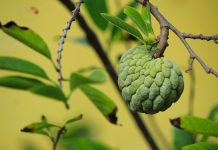Order Poales for Bamboos, Pineapples, Sedges, and Grasses
The Poales order consists of eighteen families, some of which are crucial to our story. A pineapple is the most famous member of the Bromeliaceae family, which has fifty-one genera and 1,520 species. While it has some treelike forms (including some relatives of the pineapple), it also has a great deal of epiphytes, including pineapple relatives and the Spanish moss Tillandsia, which festoons trees in southern swamps and is a part of the folklore and scenery of those swamps. It is a must-have for any movie set in the Deep South.
Paper reeds (Cyperus papyrus), which grow along the banks of the Nile, are part of the Cyperaceae, also the reeds and sedges. Poaceae, formerly Gramineae, are the 650 genera, with nearly 10,000 species, of grasses that are central to our story, and indeed to our existence as a species. A hidden apical bud makes Poaceae the most successful plant family on earth, responsible for vast biotopes and ecosystems.
Among them are the cereals, of which wheat, rice, and maize provide half of humanity’s calories and half of its protein, whereas the fleshier grasses provide the bulk of livestock feed. Moreover, in the subfamily Bambusoideae, the Poaceae contain the bamboos, which is what matters here. In tropical forests around the world, they are usually prominent or even dominant trees.
They grow to 40 meters in Chinese forests, taller than most tropical forests. I have gazed at them in Chinese forests for hours on end. Pandas (basically bears) have turned into a dedicated scoffer of bamboo, as opposed to being perfectly good carnivores. The only way to catch a panda is with a [bamboo] cage stuffed with roast other animals.
The same is true for vegetarians.) Bamboos, like palm trees, are in many ways eccentric. The flowers of many plants don’t bloom for decades or even centuries at a time, and when they do, they happen at the same time. What is their strategy for managing this? Do they respond to quirks in the light or climate, or to some cryptic message being passed between them? Why is the message being sent?
The giant pandas, for instance, rely on species that die after reproducing, leaving them stranded. The following years are characterized by a boom in young plants as a result of a binge flowering episode. In addition to trees, many other animals (such as wildebeest and zebras) use the same technique: they produce an abundance of offspring at once, so that their predators cannot possibly catch them all.
It would be easier to kill if output were steadier. Possibly, too, the sudden death of bamboo plants before the next generation gets started contributes to a reduction in panda populations. Bamboos are among Asia’s greatest assets for the traditional peoples. In addition to brushes and pens, they are useful for food, pots, cutlery, furniture, and musical instruments of all kinds, including percussion, wind, and strings. Using their swishy calligraphy and great sagging roofs, they have shaped an entire aesthetic of painting and architecture.
There are bamboo veneers or panels covering practically the entire interior of the headquarters of the International Network for Bamboo and Rattan in Beijing. Bamboos are the subject of whole discussion. It is their right to receive them.
Read More – What Are Hops Used For?







